
The Minoan civilization existed from about 2800 BC to 1100 BCE and thrived as a group through maritime trade. Living on the island of Crete, the Minoan civilization eventually spread to most of the Aegean region and mainland Greece. Crete’s strategic location on the sea routes to the Middle East as well as the society’s contact with other trading civilizations, enriched its art and culture. Other civilizations including the Egyptians admired Minoan pottery due to the items’ unique shapes and designs which drew inspiration from nature and the sea. Some elite Egyptian families even commissioned Minoan potters to create items for them.
The Process of Making the Minoan Jar Handle
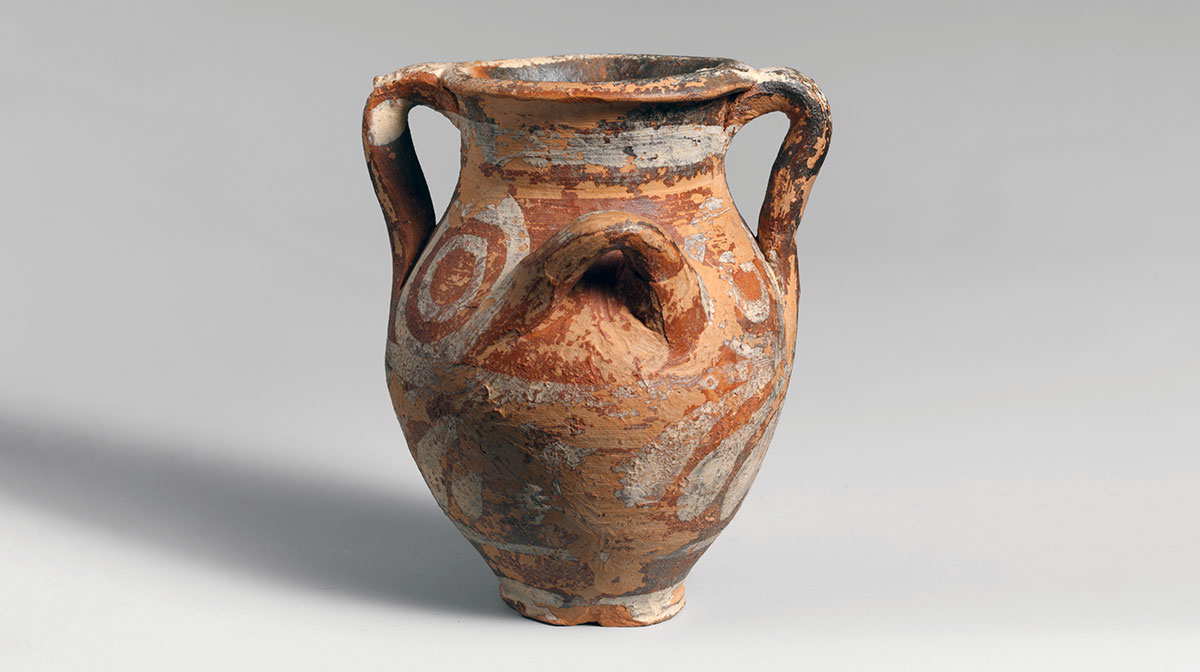
Making the handle for a Minoan jar took a lot of skill. The process incorporates many different elements and starts with selecting and getting the clay ready. Minoan artists typically used clay found in their vicinity. In the modern world, however, high-quality as well as specific types of clay that have undergone purification can be bought.
Purification processes help to remove pebbles and other impurities that can affect quality and consistency. For potters who prefer to use the DIY method, the result can be achieved by putting the clay in water and getting rid of the heavier impurities through a process known as levitation. The process makes the clay smoother and easier to use. After purification, the clay is kneaded to get rid of any air bubbles and ensure consistency. The process makes the clay easier to mold and reduces the likelihood of the vase cracking when it is dried or baked.
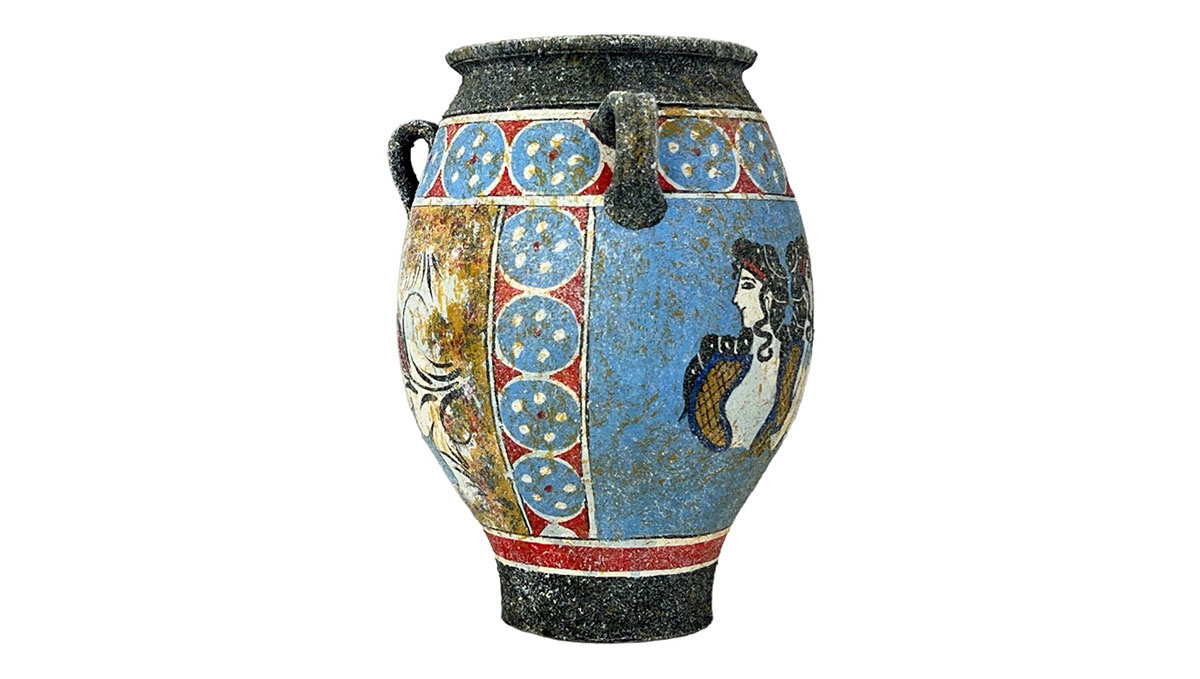
After getting the clay ready, the potter can then proceed to make the handle. Minoan vase handles came in different shapes, styles, and sizes depending on the vase design and its purpose. To make the handle, a potter typically rolls a piece of clay to the right size and then carefully shapes it by hand or with simple tools such as clay paddles to fit the vase design.
The Process of Attaching the Handle

After shaping the handle, the potter should carefully attach it to the vase. The potter starts by scratching the spot on the vase where the handle will go. The scratches allow the handle to stick better. A smooth mix of clay and water is then put on the scratched spots and works like some sort of adhesive. The handle is then pushed hard onto the vase and the potter smoothens the joint section to make it look even and natural. This step is very delicate as any weakness could cause the handle to break off while it’s drying or during the baking process.
Once the handle is attached, the vase is left to dry slowly. The process should be done carefully because drying too fast can cause the clay to crack or change form. To begin the drying process, the vase is usually put in a cool, dark place with sufficient air flow for a few days so the water can dissipate slowly. When the handle is almost dry, the potter can smoothen its surface further using a wet sponge or cloth. This step helps to even out any lumps and gets the handle ready for decoration.
How the Minoan Vase Was Decorated
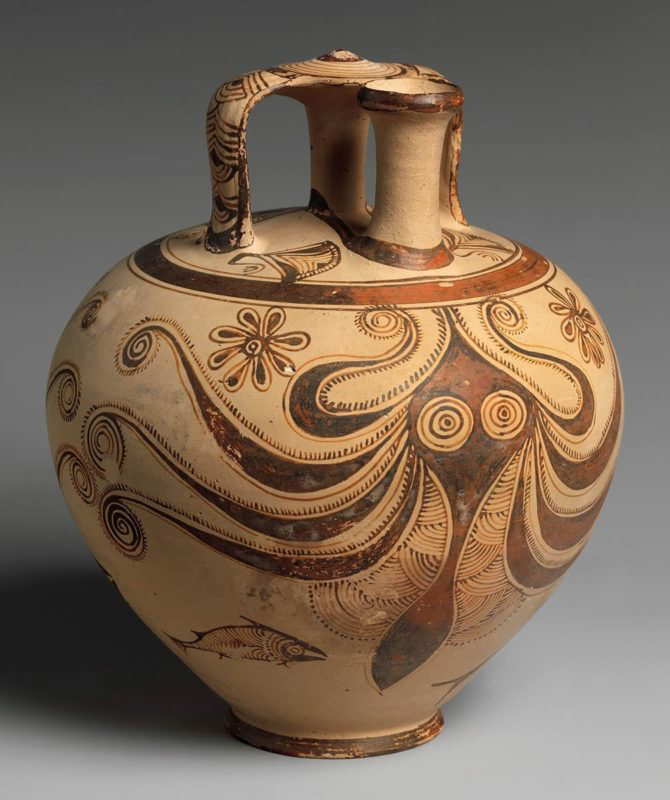
The exterior designs were very important for the Minoan people as they helped to showcase their craftsmanship. Many professional Minoan artists became famous due to their intricate and unique exterior vase designs. The designs often featured motifs of things in nature such as plants and sometimes sea creatures. This aspect showed just how much they endeared nature. The vase handle could be decorated in many ways, from etched designs on the clay to painting. Sometimes, a very thin coat of differently colored clay was added for a more premium finish.
The Kiln Process
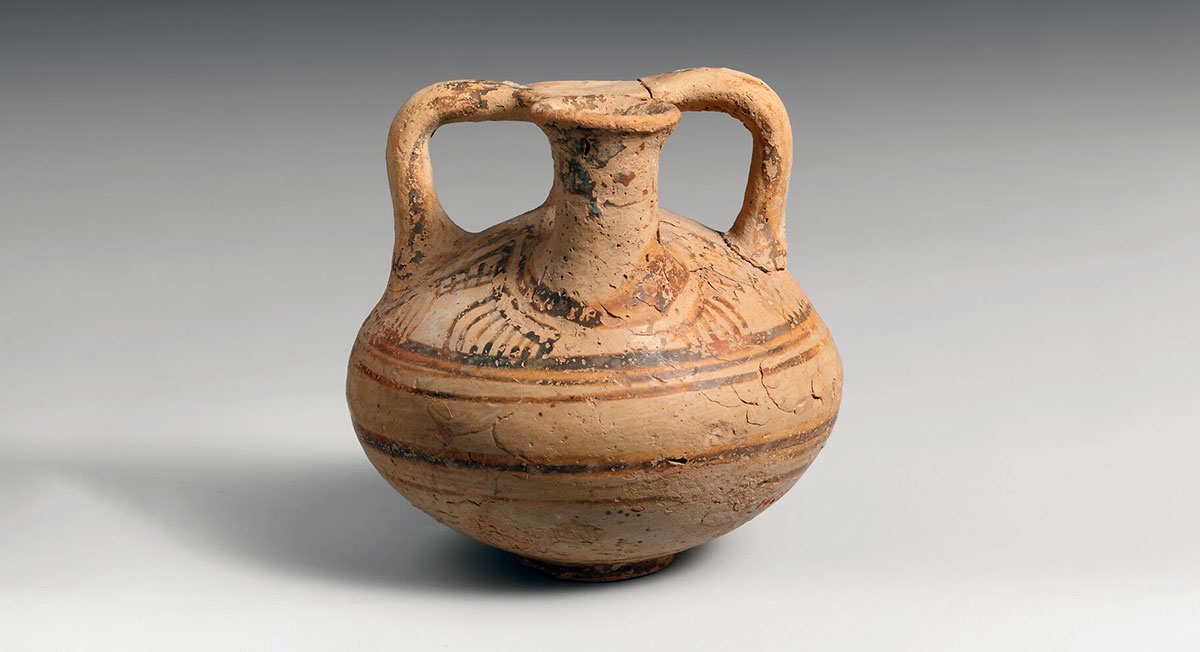
After the drying process, the vase is put in a special oven (kiln) and baked. First, it is warmed gently to make the clay harder and more compact. This prepares it for a shiny coat of glaze where necessary. It is important to note that Minoan vases are historically not glazed. Instead, dark paint and clay slips are used to make patterns and decorations. Initially, the vase is baked at about 900 degrees Celsius. At this juncture, paint and clay slips can be applied to all parts including the handle. The paint and clay slips usually contain sand and pigments.
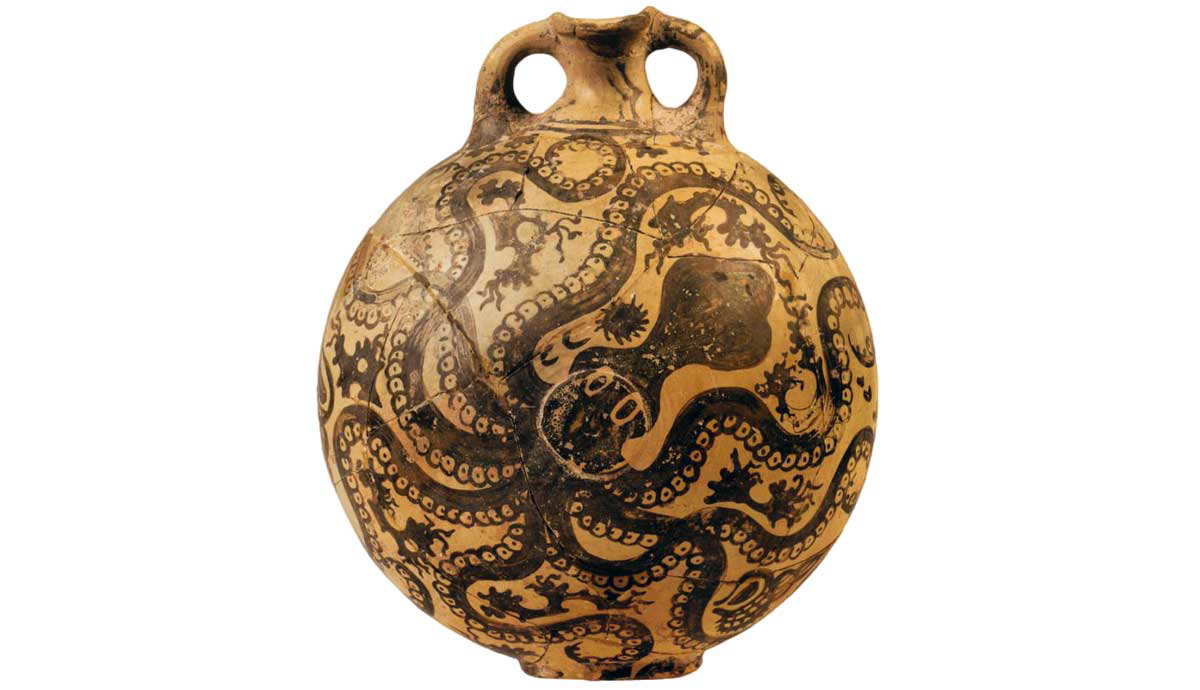
The ingredients help to enhance the look. After they are applied, the vase is baked again at a higher temperature of typically between 1000 and 1200 degrees Celsius. That said, scanning electron microscopy (SEM) evidence reveals that the Minoans fired their pottery to maximum temperatures of between 800 and 850 degrees Celsius. The firing process allows the paint and clay slips to adhere more firmly to the clay. It is also likely that they relied on a single firing process.
That said, Minoan vases were unique and advanced for their time and had characteristic thin walls. From their art, experts have been able to draw valuable insights about the Minoan way of life. For the Minoan people of Crete, pottery, paintings, and statues were a fundamental part of their artistic culture.

















